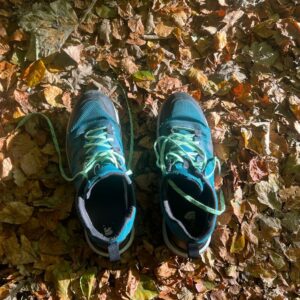The Ultimate Guide to Managing Tibialis Posterior Tendinopathy
What is the Posterior Tibial Tendon?
The Posterior Tibial tendon originates from the back of the lower leg (tibia), loops around the inside of the ankle bone (medial malleolus) and attaches to the navicular bone which is at the top of the arch of the foot. It is responsible for supporting the arch of the foot and assists with supinating (rolling out) the foot when pushing off to take the next step when walking.
Symptoms of Tibialis Posterior tendinopathy, also known as, Posterior Tibial Dysfunction, include swelling along the inside of the ankle, pain with walking, running and extended periods of time standing, people will also struggle to hop and rise onto their tip toes. This condition is the only known one where the tendon lengthens and thins out compared to other which become thicker i.e Achilles Tendinopathy. This usually happens if it is left for a long time without treatment and can result in the development of a flat foot.

The Cause
The pain on the inside of the foot and ankle could be Tibialis Posterior Tendinopathy. It can often feel sharp and shoot down from your ankle into the arch of your foot.
It can be caused by many different things such as:
- Sudden increase in level of exercise / activity – If you are not an active person and suddenly increase your walking, start to run, or start going to a lot of fitness classes in a short period of time, your muscles and tendons are not able to cope with this big increase and this can often lead to the development of pain in the inside of your foot and ankle.
- Being overweight – This causes more pressure to be applied through the muscles and tendons of your foot. This can lead to the lengthening of the Posterior Tibial tendon as it is not able to cope with the pressure being placed through it. If this happens it can also cause the arch of the foot to flatten out.
- Middle age – As we get older our muscles and collagen changes which results in them not being as strong as they once were. This also adds to the Posterior Tibial tendon lengthening and not being able to cope with the load being placed through it.
- Flat feet – Sometimes the structure of your feet can be a contributing factor to the development of arch and ankle pain. Having flat feet can cause more pressure being placed through the sole and inside of your feet. When you add this to a sudden increase in activity, this can lead to pain in the inside of the foot and ankle.
- Medical conditions – Being a diabetic or having other conditions such as Rheumatoid Arthritis or systemic conditions, can cause changes to the tendon cells leading to pain. If you have diabetes and your blood sugars are high (more than 7mmol/L) for a long time, or your Rheumatoid markers have changed, this can also lead to the development of pain in the arch and ankle.
- Medications – Certain medications have side effects which can also be the cause of heel pain such as cholesterol medication or antibiotics (fluoroquinolones – ciprofloxacin, norfloxacin & moxifloxacin). If you have recently been taking one of these medications, you should consult your GP to see if another medication can be prescribed without these side effects.
How to prevent pain on the inside of the foot and ankle
 There are some things that you can do to try and prevent pain on the inside of the foot and ankle. These include:
There are some things that you can do to try and prevent pain on the inside of the foot and ankle. These include:
- Losing weight – By losing weight, we reduce the pressure being applied through our feet. This can be done through diet and exercise.
- Gradual increase in exercise – A gradual increase in exercise (i.e. Two 30 minute walks a week for 2 weeks, then increase it to 3 walks and so on) allows the muscles and ligaments to become stronger at a rate at which they can adapt to, which should minimise the development of heel pain.
- Footwear – Wearing the correct footwear is very important, not only does this help with your choice of exercise, it will also help support the arch of your feet reducing the pressure being applied the Posterior Tibial tendon. Things you should be looking for in a good shoe are a firm heel counter (the back of the shoe doesn’t fold down), lace up or Velcro, firm midsole (shoe can’t fold in half) and a toe spring (the front of the shoe bends up). You also want to avoid wearing shoes which are flat when you are exercising. Having your feet measured for length and width is also very important. There are many different brands of footwear and within those brands they have different ones for support or high arched feet. If you are not sure what type of footwear would suit you best, feel free to book an appointment to discuss this further.
- Rest/Recovery – Making sure you have at least a day off after exercising is important to help prevent heel pain. By giving your muscles and tendons time to rest and recover, this allows them to be ready for the next time you train/exercise. If you were to exercise every day, this would result in a big increase in muscle/tendon use and eventually the cells that make up the muscles and tendons will begin to fail and break down causing pain.
- Sleep – Sleep plays a significant role in injury prevention. It has been found that not having enough sleep (7-8 hours) can dramatically increase your likelihood of developing pain. The quality of your sleep is also important.
- Dealing with stress – Modern life is very busy and can also be stressful. Stress along with other mental health issues such as anxiety, can lead to the development of heel pain. It is important that if you are experiencing stress or other mental health issues you should speak to you GP or a psychologist / counsellor to help you deal with this which over time.
- Medical conditions – Making sure if you are diabetic that you monitor your blood sugar levels and make sure that they do not sit above 7mmol/L for a long period of time. If you are struggling with controlling your diabetes, making an appointment to see your GP, endocrinologist or Diabetes Educator is very important and will help finds ways of stabilising your blood sugars.
- Strength – By adding in strength exercises, i.e. weights or body weight exercises, to your weekly routine it has been found to help your muscles and tendons cope with increased levels of activity. If you are a runner and do not have any strength sessions planned into your schedule, you really need to add a lower leg strength session as this can help prevent heel pain but has also been found to improve performance. If you are not sure what a strength session would look like, please feel free to use the book now button to make an appointment for us to help you with this.
How to self-manage your arch and ankle pain
 There are ways in which you can help manage your pain.
There are ways in which you can help manage your pain.
You should check your footwear and change them if you notice they are worn on the outsole or are not providing you with support like they used to.
Applying an ice pack to your arch and ankle for 5-10 minutes, three times a day will also help manage any localised inflammation. Remember to wear a sock on your foot when applying the ice to prevent a cold burn. *if you have neuropathy (where there is no feeling) you should avoid doing this until you have spoken to your health care practitioner.
Strapping your foot and ankle can also help. Click on this link (Strapping your ankle) which shows you how to do this by yourself.
If you try all of this and are seeing very little or no improvement, book an appointment via the ‘book now’ button or call to start your journey to recovery and getting stronger and staying active.
What if there is no improvement in the pain?
At Sports & Injury Management, we work with athletes and weekend warriors, who are struggling with persistent, stubborn, niggling injuries, and work together on a specific treatment plan to help fix this pain.
This allows those athletes and warriors to become stronger, return to exercising, training, participating in sports and live pain free.
Recovery takes time, so staying patient and persistent is key. However, if you're still struggling with pain, and are seeing little to no improvement after a couple of weeks, your Diamond Creek Podiatrist can help. Call today or book online to take the next step towards getting back to the activities you love, sooner rather than later.
With over 14 years as a Podiatrist, I have successfully treated lots of patients with this and similar conditions. Come and join our community of active happy people.
SIM – Getting stronger, staying active
